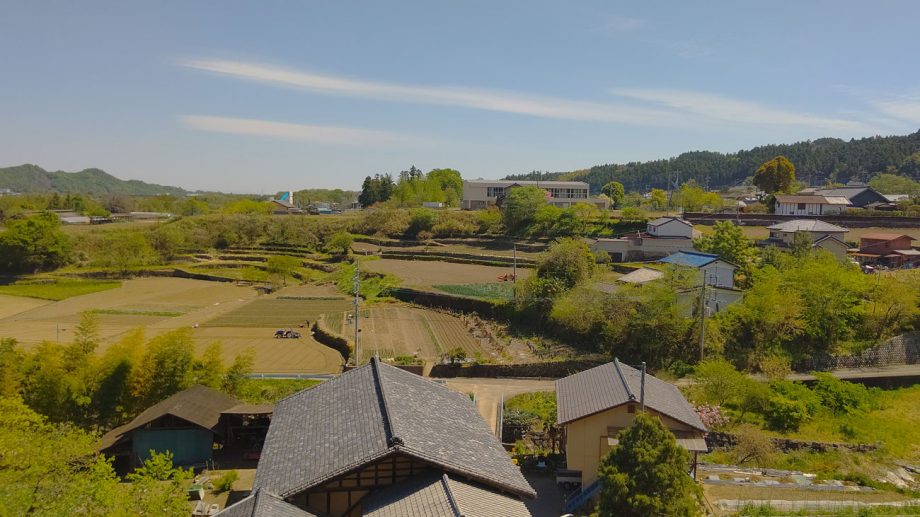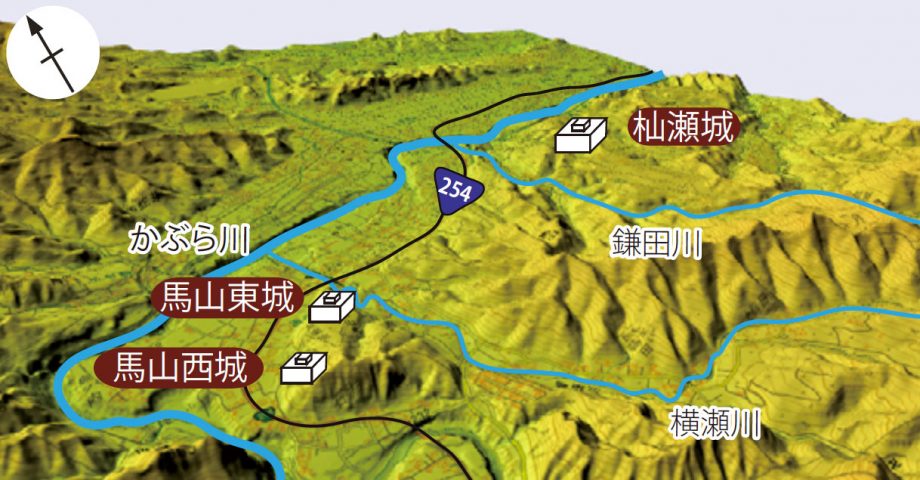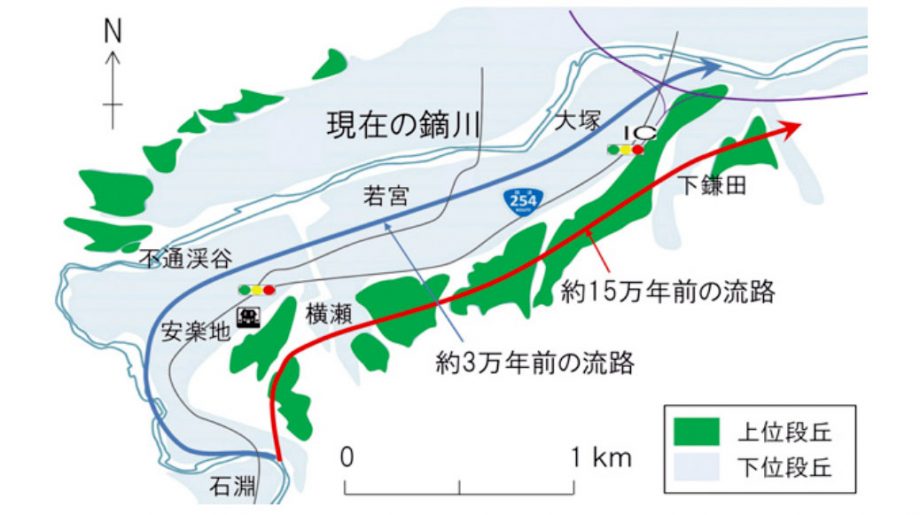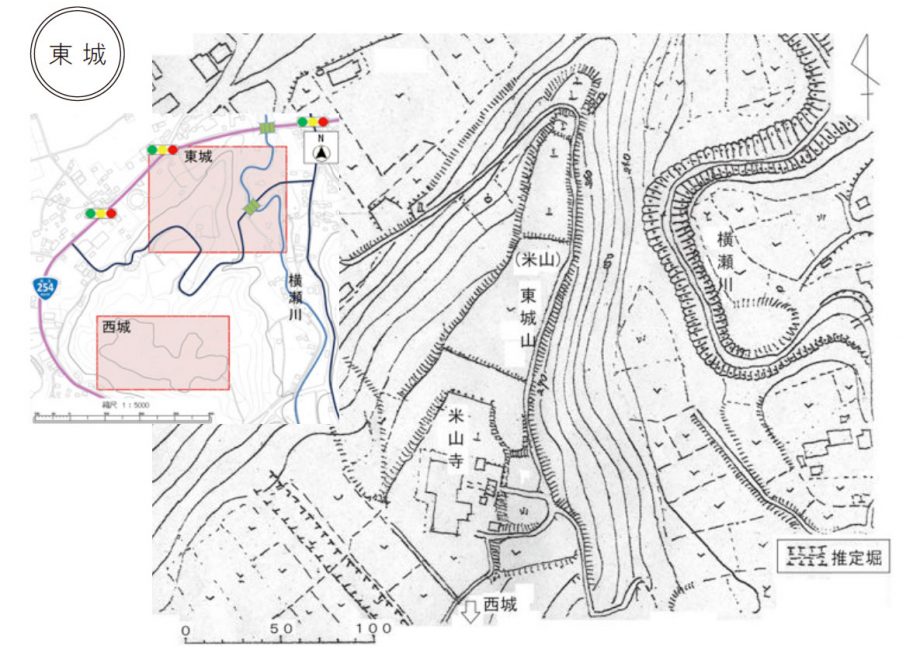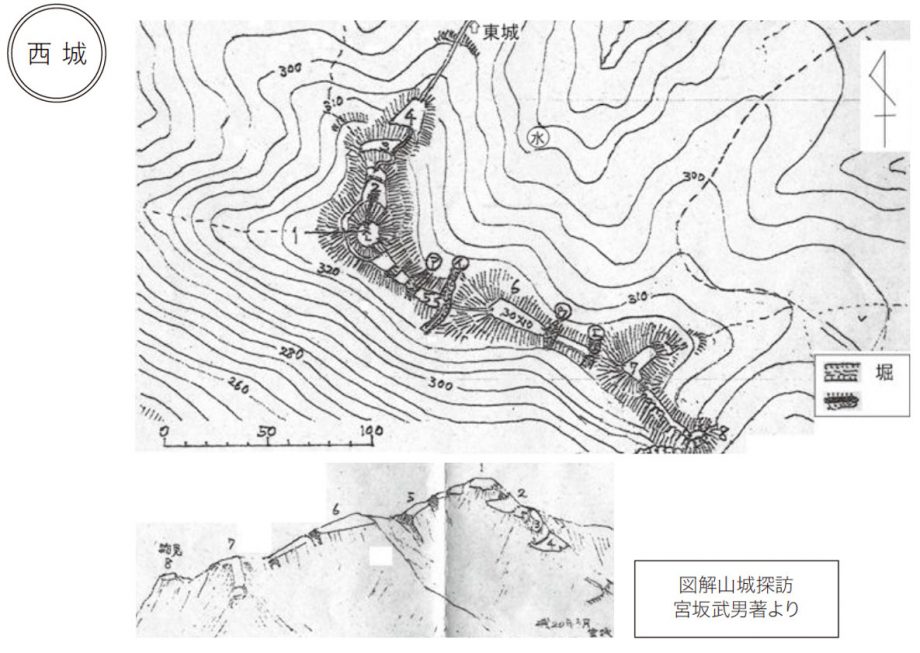Mayama Course
Shimonita Geopark Guidebook
Welcome to Shimonita Town
On both sides of the river near the “Michi-no-Eki Shimonita” (Roadside Station Shimonita), you’ll find widespread terrace landforms (dankyū chikei, step-like terrain formed by river erosion).
In ancient times, people lived on the upper river terraces (jōi dankyūmen), which offered wide visibility for hunting. As agriculture developed, they moved to the lower terraces (kai dankyūmen), which were closer to water sources.
Today, fields of Shimonita’s famous agricultural products, such as Shimonita Negi and konjac, spread across these upper and lower terraces. In early summer, hydrangeas lovingly cultivated by local volunteers from the “Hydrangea Nurturing Group” beautifully decorate the terrace slopes.
Near the Shimonita IC (Interchange) of the Joshinetsu Expressway, a rare earring of foreign origin dating back around 7,000 years was unearthed—evidence that Shimonita has had active exchanges with other regions since ancient times.
Let’s set off from “Michi-no-Eki Shimonita” and take a stroll through the highlights of the Mayama district.
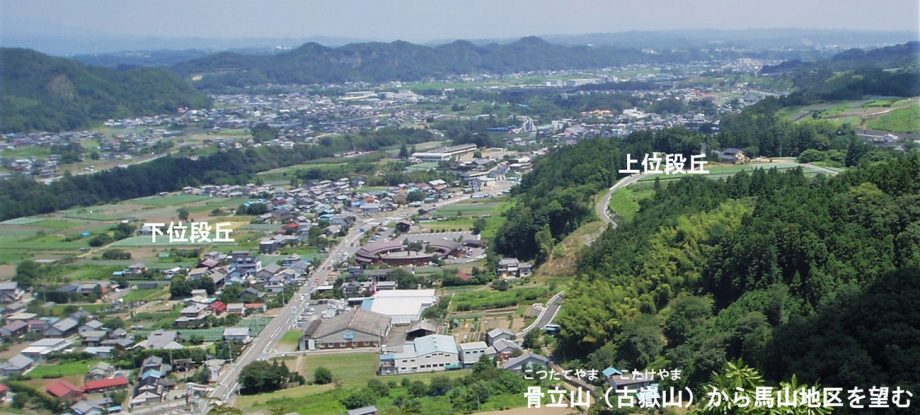
Terrace Landforms (Dankyū Chikei)
The step-like flat surfaces of this terrain were shaped by the repeated erosion of ancient rivers.
In the Mayama district, a combination of land uplift and river erosion formed this characteristic stair-step topography.
The layers of gravel and sand deposited by the rivers offer excellent drainage, making them ideal for growing Shimonita Negi.
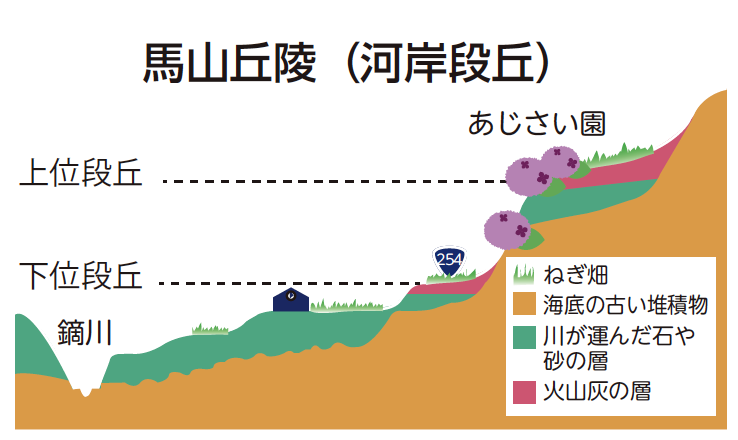
Mayama Course Map

Shimonita Geopark
Shimonita is home to the “Rootless Mountain,” known geologically as the Atogura Klippe, one of the 100 notable geological features in Japan, and also preserves traces of volcanic activity from about 9.5 million years ago, offering a firsthand look at dynamic shifts in the Earth’s crust.
Historic and industrial heritage sites in Shimonita—such as the Arafune Wind Cave, a registered UNESCO World Cultural Heritage Site—demonstrate how people have utilized the area’s unique geology and natural resources.
Even the region’s famed Shimonita Negi and konjac are part of Shimonita’s natural geological bounty.
A Geopark is a type of natural park where visitors can explore the deep connections between the land and human life.
1. Michi-no-Eki Shimonita (Roadside Station Shimonita)
Located about five minutes from the Shimonita Interchange on the Joshinetsu Expressway, this roadside station offers a variety of local specialty products and fresh vegetables. It also serves as a tourist information hub for the Nishi-Jōshū region, with the Shimonita Town Tourist Information Center located on site.
Restrooms and a fast-charging station for electric vehicles are available on the premises 24 hours a day.

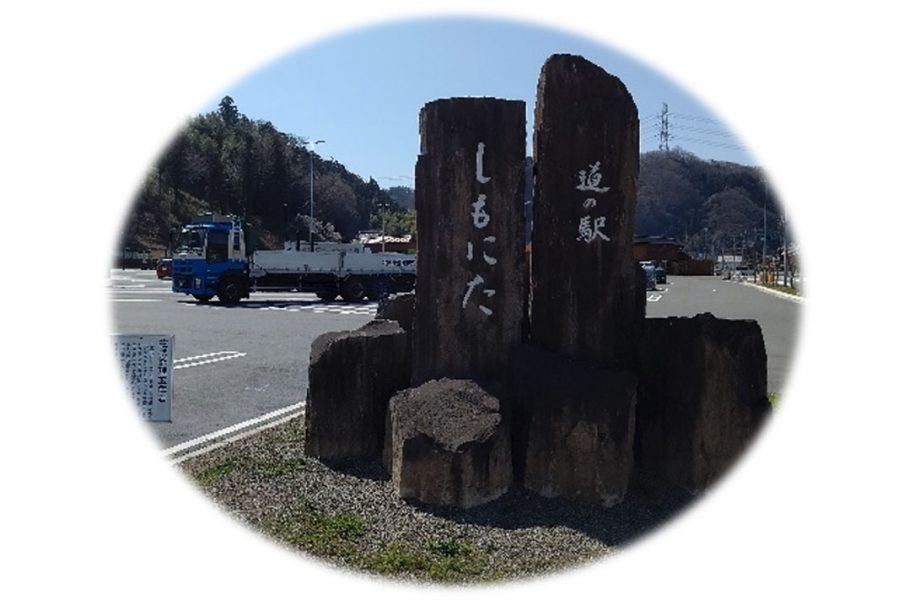
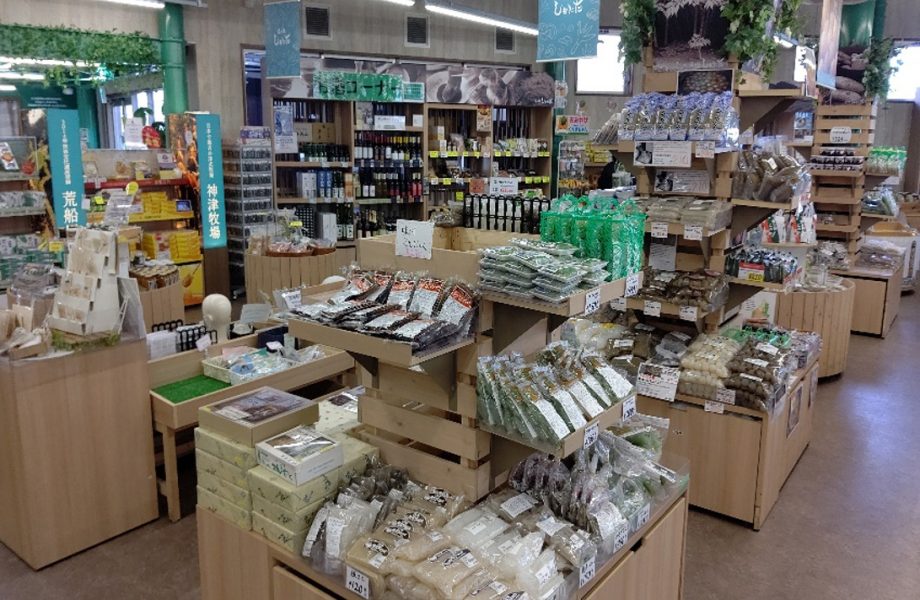
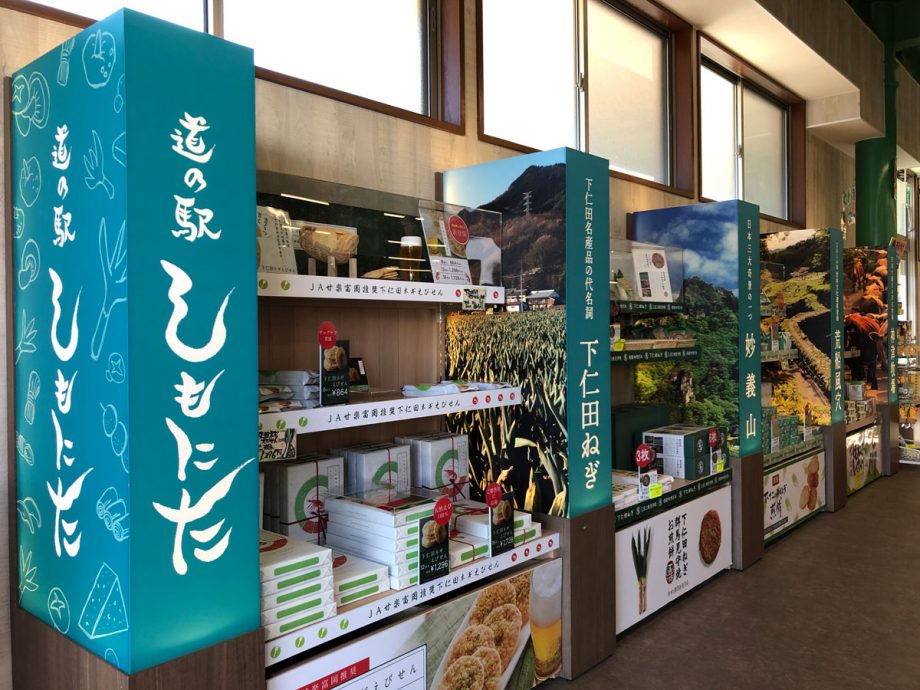
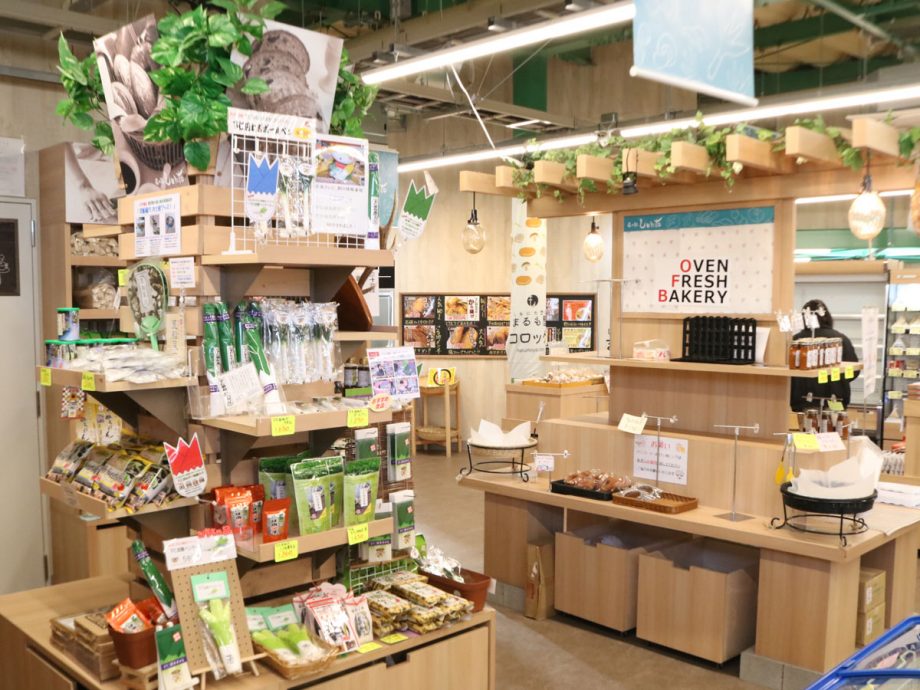
2. Anrakuji Itabi (Stone Monument)
A small hall stands in a graveyard along a narrow road just north of the Anrakuji traffic light. Inside is an old itabi (stone monument) dating back to 1368.
Itabi are flat, stone steles built during the Kamakura and Muromachi periods, often serving as memorial towers or gravestones.
The stone used for this itabi is a type of green schist (known in Japanese as ryokushoku hengan).
The Hall and the Itabi Stone Monument
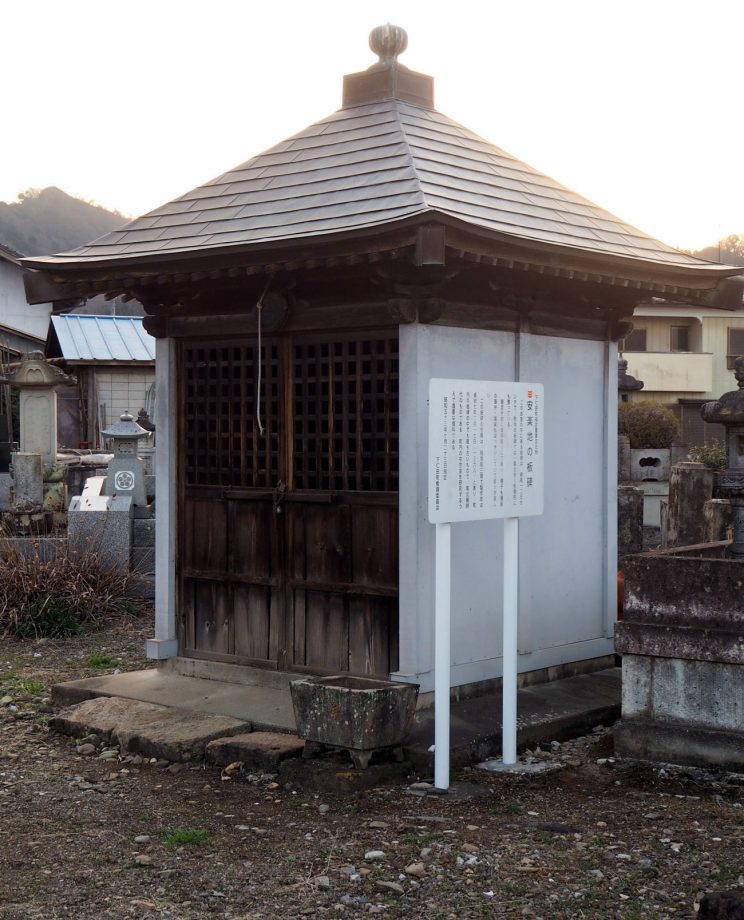
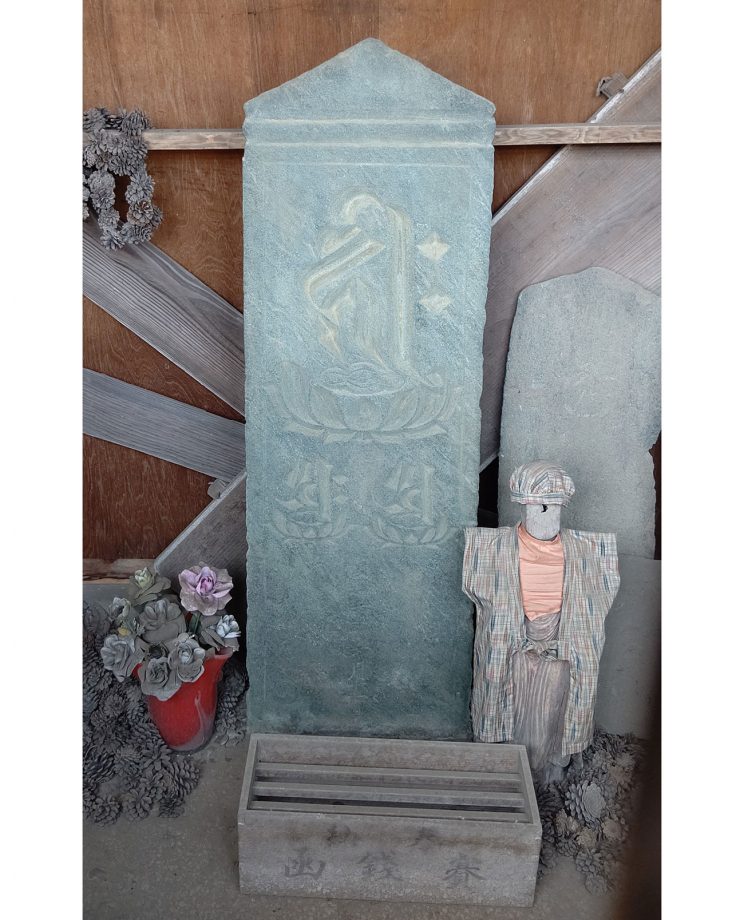
Green Schist
Itabi are thin, flat stone monuments. The green schist found in the Sanbagawa(also spelled Sambagawa) Belt, which stretches from northern Saitama to southern Gunma within the Kanto Mountains, is known as Sanbaseki (Sanba stone).
This stone was widely used in Jomon period stone rods and medieval itabi.
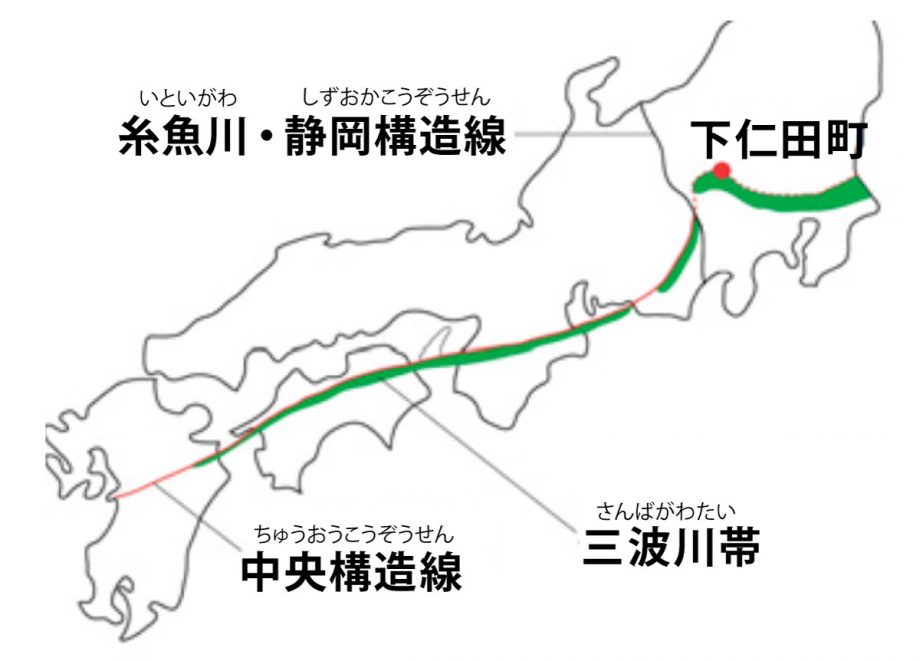
3. Tōrazu Gorge (Futsū Keikoku)
The Tōrazu Bridge, located south of Sendaira Station, offers a clear view of the striking Tōrazu Gorge.
The name “Tōrazu” (“impassable”) is said to come from the days when the Kabura River was used for transport—boats were unable to pass through this rugged part of the gorge.
Upriver from the bridge, cliffs around 20 meters tall stretch for 500 meters, forming one of Shimonita’s scenic highlights. The rock walls are composed of mudstone and sandstone of the Nanjai Formation, as well as extremely hard conglomerate of the Kanohara Formation.
Above the cliffs are flat, wide fields, which sit on river terraces formed by the Kabura River. These terraces are remnants of a time when the river frequently flooded during glacial periods tens of thousands of years ago.
The gorge as we see it today began to be carved around 10,000 years ago.
Tōrazu Bridge and Tōrazu Gorge
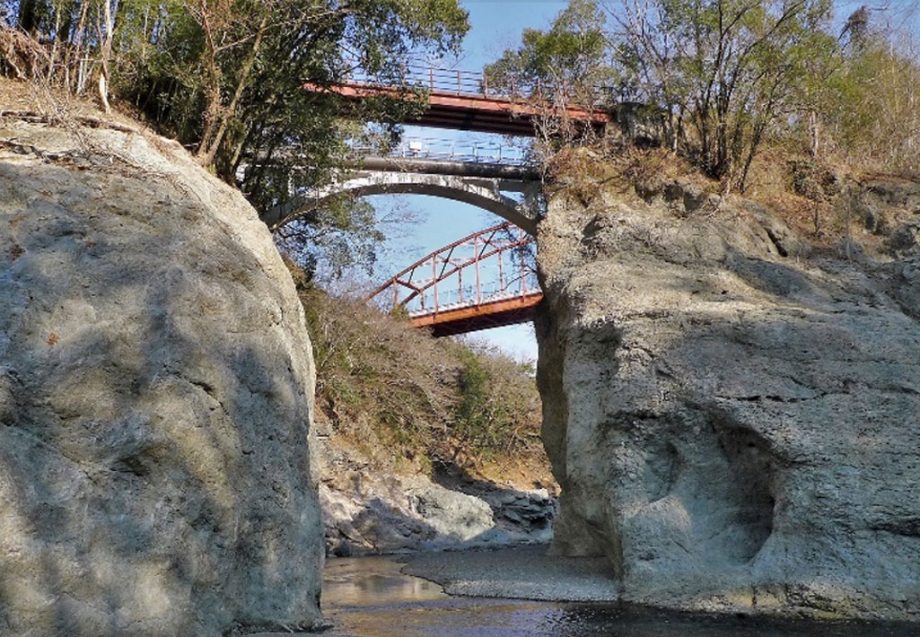
Around 1955 – The Suspension Bridge at Tōrazu
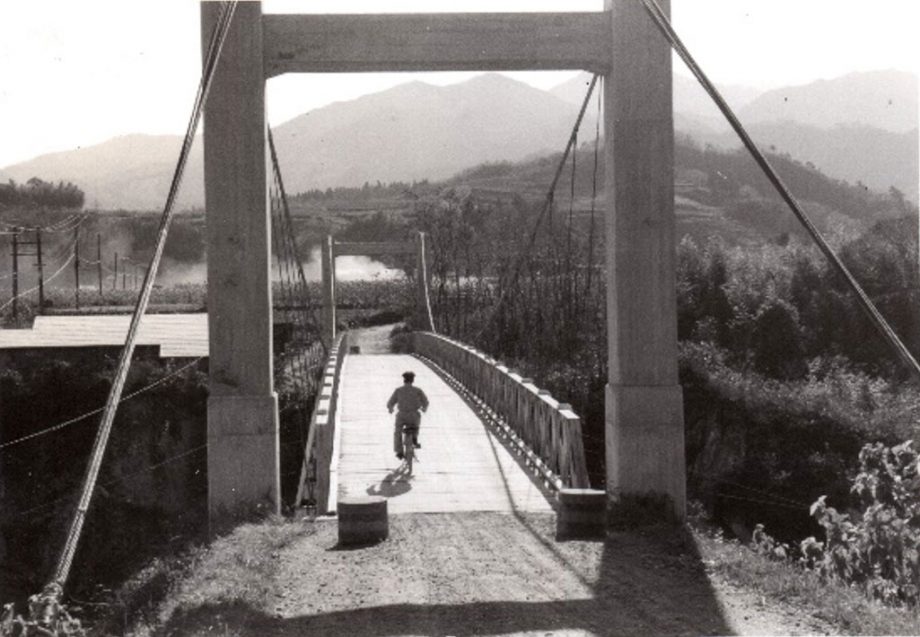
4. Lower River Terraces
Lower River Terraces
Along National Route 254, which runs parallel to the Kabura River, you can find a series of lower river terraces. Around 30,000 years ago, during the Late Pleistocene, the Kabura River flowed at this elevation. Repeated flooding events carried mud and sand that gradually filled in the area, creating the broad, flat surfaces of the terraces.
Terrace Gravel Layers
Terrace Gravel Layer at the Confluence of the Yokose and Kabura Rivers
These geological layers contain rounded stones, which became smooth as they were transported by the river in ancient times. This tells us that the terraces were originally riverbeds, flattened over time by the river’s erosive forces.
Topography of Mayama and the Remains of a Mountain Castle
In the southern part of the Mayama area lie mountains such as Mount Kurouchi and Mount Inafukumi, which are part of the Kanto Mountains.
The tributaries of the Kabura River, flowing from the south to the north, cut across these terraces, leaving isolated hills scattered across the Mayama region.
These vantage points, offering clear views of the surrounding area, were ideal locations for mountain castles during the Warring States period.
Among them, Higashi-Mayama Castle was a natural fortress, protected by a steep river terrace cliff formed by the Kabura River to the north and another cliff carved by the Yokose River to the east.
Shifting Course of the Kabura River
Around 150,000 years ago, when the upper terraces were formed, the Kabura River flowed straight northeast from around the Ishibuchi area through Yokose to Shimokamata.
By about 30,000 years ago, when the lower terraces began to form, the river had shifted course, flowing through Anrakuji, Wakamiya, and Ōtsuka.
Around 10,000 years ago, it moved even farther north to its present-day location, where it began carving out a new valley.
The Tōrazu Valley and the upstream Hanekoshi Gorge were formed during this time.
5. Ruins of Mayama East Castle and West Castle
East Castle
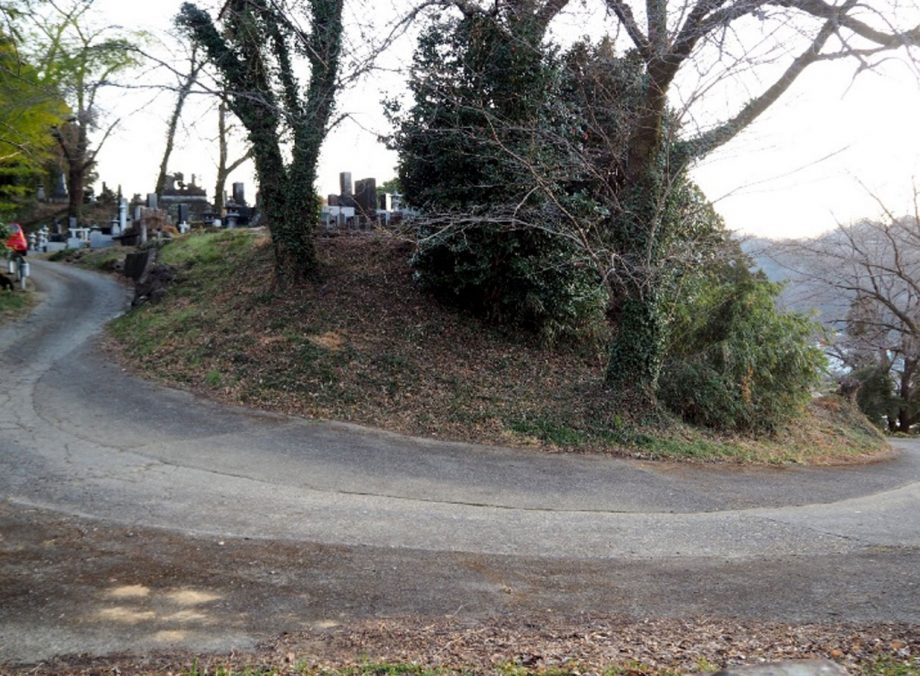
This narrow, elongated castle site protrudes about 300 meters northeast from Beisanji Temple, in a beak-like shape. The current access route from the roadside station (Michi-no-Eki) area is believed to be the main gate approach. The main enclosure (honmaru) is thought to have been located where Beisanji Temple now stands.
Situated on a terrace with excellent visibility, it formed the core of the fortification. Along with Mayama West Castle, located approximately 400 meters away, it is considered to constitute a pair-castle layout, functioning as a single strategic complex.
West Castle
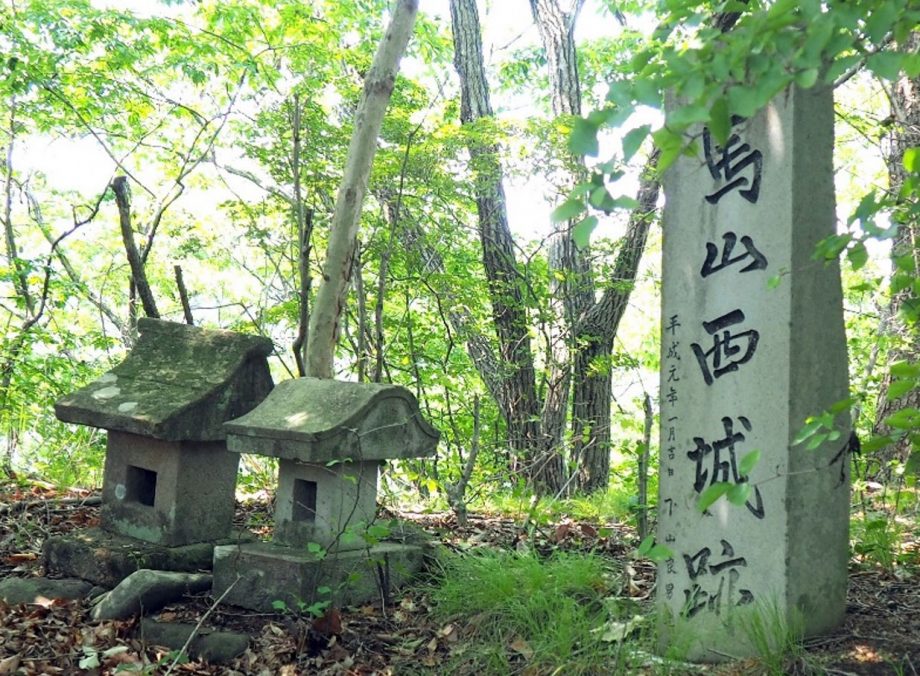
Located on the rear mountain behind the East Castle, the West Castle was developed as a functional wartime fortress. It was designed to defend the main enclosure, serve as a lookout, and act as a final stronghold.
The site stretches about 350 meters in length, with the main enclosure at the western edge of the summit. Sitting atop a steep cliff 110 meters above the Kabura River, it is at an elevation of 334 meters.
6. Beisanji Temple
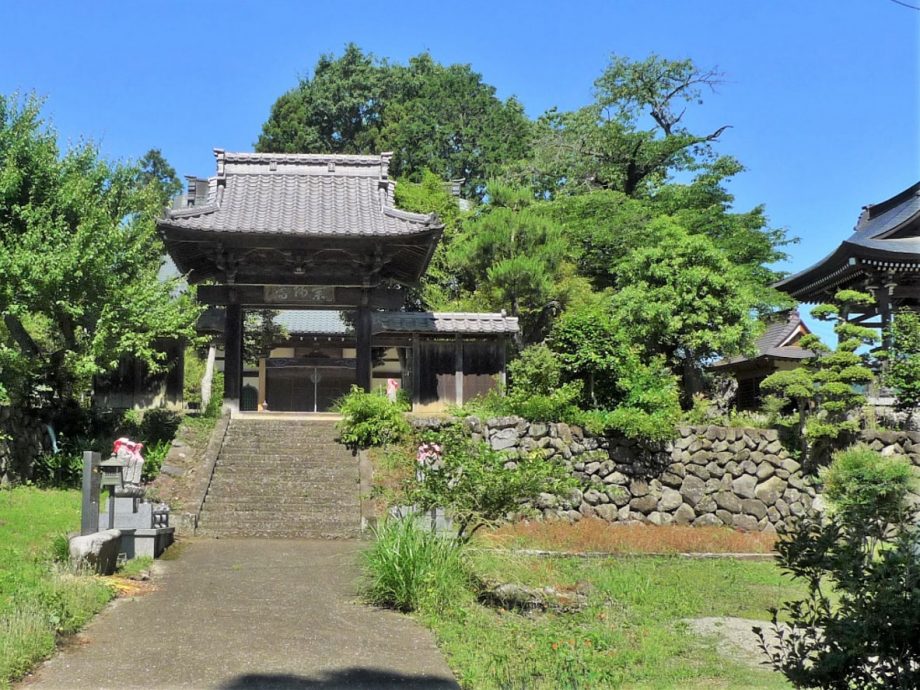
Beisan Iō-in Beisanji Temple is one of the three temples named “Beisan” along with Echigo Yoneyama (in present-day Niigata Prefecture).
It was founded in 1337 (Engen 2), and the principal image is Yakushi Nyorai (the Medicine Buddha), said to be crafted by the monk Jikaku Daishi (Ennin). The temple is believed to grant blessings related to health and medicine.
It belongs to the Tendai sect, and its treasured possession is the complete collection of the Daihannyakyō Sutra (Great Perfection of Wisdom Sutra).
Yoneyama Archaeological Site
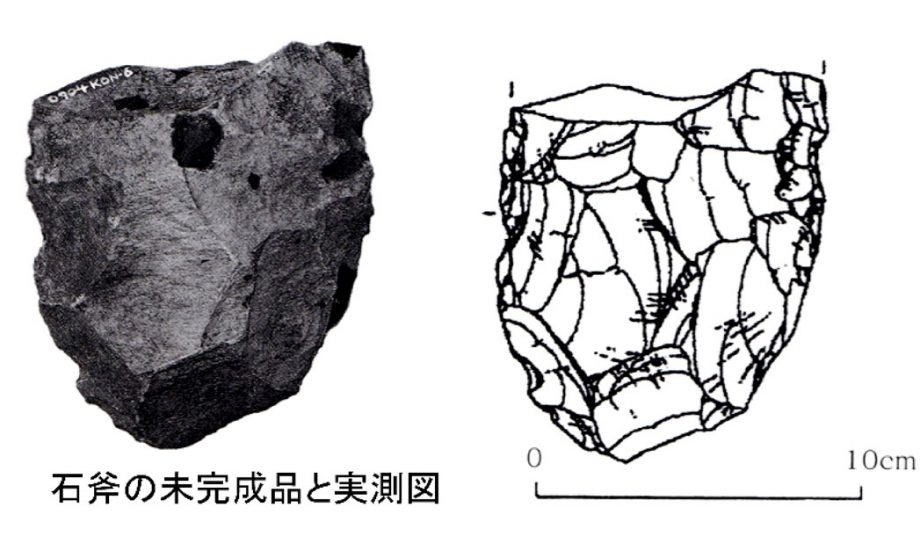
On the upper terrace surrounding Beisanji Temple, archaeological remains from the Paleolithic to Yayoi periods and the Warring States period have been found, collectively known as the Yoneyama Archaeological Site.
In a 2008 (Heisei 20) excavation conducted prior to construction of the agricultural bypass road, remains of a settlement from the late Early to Middle Jōmon period (about 5,000 years ago) were discovered, along with numerous pieces of Jōmon pottery and stone tools.

